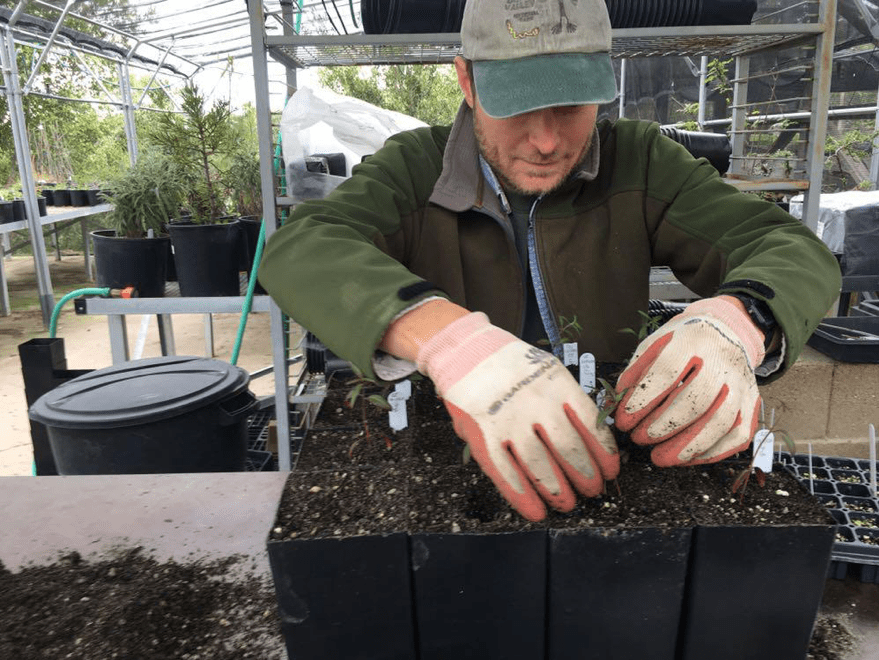CPC Best Plant Conservation Practices
to Support Species Survival in the Wild
to Support Species Survival in the Wild

Sean Carson propagates rare Clarkias for research and bulks seed at Santa Barbara Botanic Garden. Photo by Heather Schneider.
The importance of good horticulture cannot be overstated. At botanical gardens, we depend on good horticulture for our lovely displays. Our conservation collections offer unique challenges in that they often are species that have little published information about their germination, propagation or cultivation, they require meticulous recordkeeping, and unlike our horticultural display plants, we want to conserve the full variation of their appearances (from ugly to beautiful, the runts and robust ones). Unlike accessions of common species, the genetic diversity of rare collections is managed to maximize diversity.
As is true for other aspects of best conservation practices, horticultural care of rare plants begins with a good plan and follows with communicating the plan to all parties involved with the care of the plants. Because the plants are likely to be at the institution long-term, this means that special care advice needs to be transferred across years and personnel changes. If we think of our notes and records as serving someone, who will be caring for the plant decades hence, it will color the way we write our observations, label individual plants permanently, and record the information for long-term accessibility.
Because rare species are often unknown in horticulture, practitioners should be prepared to conduct careful experiments and document their findings. CPC encourages practitioners to adopt the Adaptive Management Process in germination and propagation trials. This stepwise approach involves defining the problem, generating a hypothesis, designing an experiment to test the hypothesis, gathering data, evaluating the results, and adjusting if necessary. In many cases, good horticulturists follow this process, but few write it down. Meticulous record keeping is both an essential component of caring for a rare species and for transferring knowledge to successors. We encourage documenting both successes and failures, as each can help conservationists worldwide progress our plant conservation practice.
Here we present some overarching guidelines for horticulture and encourage our network to share stories that can help us all gain expertise to grow healthy rare plants.